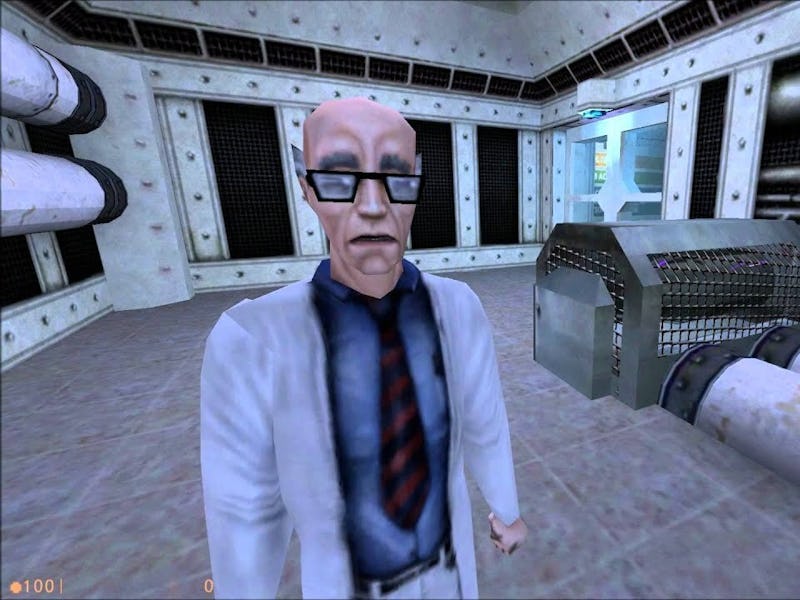How a Revolutionary First-Person Shooter Permanently Altered The DNA of Video Games
“C'mon, Gordon! You trying to get me into trouble?”

Cinematic cutscenes were all the rage in 1998. Konami had just dropped Metal Gear Solid, adding more nuance to stealth-based games, along with codec-guided cutscenes that helped bring protagonist Solid Snake to life. Meanwhile, survival horror like Resident Evil 2 leaned heavily on atmosphere, combining puzzles, combat, and branched storylines to bolster pre-rendered cutscenes that heightened the feeling of being stranded in a zombie apocalypse.
Among this deluge of big-name franchise projects, small-scale developer Valve Corporation has other ideas. Completely forgoing the intrusive nature of cutscenes that often shattered immersion, Valve lovingly crafted its debut product in the form of a first-person shooter that used scripted sequences so the gameplay never stopped.
Valve’s passion project, titled Half-Life, threw players smack dab in the middle of the eerie Black Mesa scientific facility, where theoretical physicist Gordon Freeman finds himself embarking on a wild, dangerous ride that starts with a literal tour on a clunky monorail. The first thing you feel when you ride the monorail as Gordon is unease. There’s something unsettling about the computer-generated voiceover that guides you through the rules of the facility, which seems be to the base for advanced experimentation on alien artifacts.
Once a strange alien crystal is inserted into an anti-mass spectrometer, all hell breaks loose. The machine explodes, causing most of the facility to cave in while creating a rift in space-time that allows hostile alien creatures from another dimension to crawl through this accidental portal.
A sketchy secret lab. What could go wrong?
While there’s nothing novel about an alien invasion story that takes advantage of FPS mechanics to create a gripping narrative, Half-Life offers something far more interesting than a cut-and-dry shooting gallery. The inherent value of Half-Life lies in the way in which it upended FPS storytelling that followed the shoot-cutscene-shoot formula by smartly creating the illusion of a seamless journey that is both thrilling and harrowing to experience.
Once Half-Life truly begins, the basic concept is simple: slaughter all the aliens and escape Black Mesa by any means necessary. If you’ve played any of the Doom games before, this may sound familiar, but Valve managed to rethink pretty much every FPS trope along the way.
Take the game’s sound design, for example. When objects eerily clatter in the dead silence of the caved-in facility, or a faint screech is heard from an unseen source that feels a little too close for comfort, it injects an organic element of paranoid fear into the experience. These audio cues are also vital, however, as Gordon’s survival relies on a shrewd awareness of his immediate environment, rather than the usual brute force.
Shoot the aliens!
Half-Life still has combat, of course, much of which takes place in cramped spaces, The key to progress isn’t just plowing through waves of evil aliens, but smartly managing a crowd of attackers. That requires becoming well acquainted with the string of connected maps that make up Black Mesa — again, there are no cutscenes here to transport you, just one continuous experience.
There are plenty of puzzles, too, which cleverly incorporate the environment. At various points, Gordon needs to turn on heat valves to wound a boss or stack boxes to create a makeshift ladder. The goal is never to level up and overpower your enemies but to outsmart them, which makes the crowbar Gordon wields a perfect symbol of his everyman stature.
Gordon Freeman is no hero, nor will he ever be — he is simply a man trapped in a hellish scenario, desperately interacting with every door, valve, or device to map his escape as the creatures start pouring in.
Gordon’s trusty crowbar in action.
Today, with the steady influx of FPS action adventures that mimic or attempt to duplicate the Half-Life experience — or simply use the game as inspiration for fresh innovations — it’s easy to take this approach for granted. However, it’s essential to acknowledge how much we owe to Half-Life.
The anxiety-inducing exploration of games like Outlast owes everything to Valve’s trailblazing game, while horrors of a similar tint have inventively inspired segments in System Shock 2 and Dead Space. The DNA of Half-Life is ever-present in every first-person horror that came after, with its legacy still being deeply felt 25 years later.
Half-Life is currently available for free on Steam.